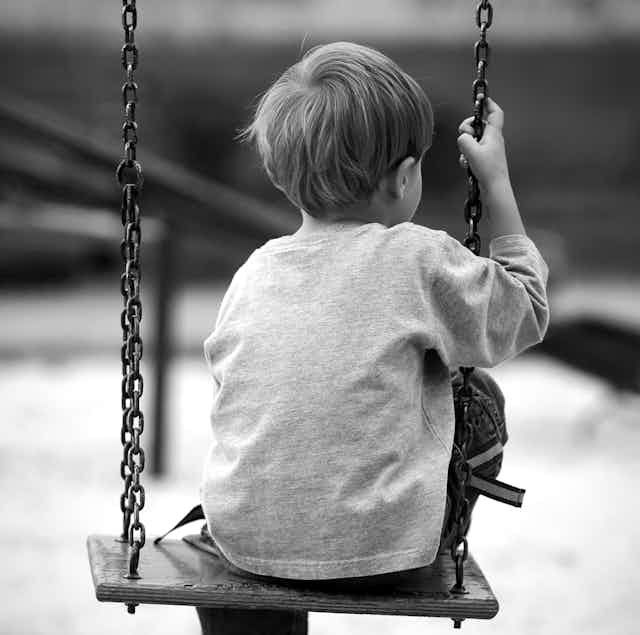The second half of the 19th century saw the rise of the child rescue movement and philanthropic voluntary agencies which provided institutional care and support for the poor, destitute and orphaned young. It was influenced by government welfare policy, which focused on separating the “deserving” of help from the “undeserving”, as set out in the 1834 Poor Law.
There is no doubt that measures to promote child welfare have developed and evolved over the past 100 years. However, there are practices and perceptions in the way child protection and safeguarding is carried out today which have roots in the 19th-century child rescue movement.
‘Problematic’ children
My research looks at how the idea of who does and doesn’t deserve help from the state persists in the modern era. It shows that both in the late Victorian and Edwardian era and in current times, mental health issues and bad behaviour in children can lead to stigmas around “problematic children” who are beyond help.
I compared information from two sources. The first was 46 interviews with young care leavers and adults involved in safeguarding them conducted between 2015 and 2018. The second was 108 case files of children taken into care by the Children’s Society (formerly known as the Waifs and Strays Society) between 1881 and 1918. In both data sets, children with behavioural and mental health issues were considered “problematic”. They and their families were viewed as responsible and undeserving of help.

Take for example the case of a six-year-old girl taken into care in 1892 and sent to a children’s home. In 1898 (when she was 12) she is described as “having no control over herself and at times very violent” and that she is “silly and childish in behaviour and very idle”. There is reference to her being insane and that “this case will inevitably have to be dealt with by the Poor Law authorities”.
Fast forward 123 years. A young care leaver aged 21, who had spent time in children’s homes and foster care, is described as “extremely complicated” and “difficult” with mental health issues that have “gone on for an extremely long time”. Interviews with safeguarding practitioners flag up something else, namely that this young person “had a rough time in care and just needs someone to support him”, but also that staff are unable or even unwilling to provide support: “We can’t support young people like him”.
In both cases, the way in which children act out their trauma and their associated behaviour has become the problem, rather than the trauma itself and its causes.
Beyond help?
Another case is that of a girl taken into care in 1904, when she was four years old. In 1917, when she was 17, there is reference to her being “mentally deficient” and a report that she will be “handed over to the local infirmary so that she may be under observation”. The correspondence also includes reference to her behaviour. She showed “a furious outbreak of temper” and is “inclined to be sulky and morose, which somewhat handicaps her and makes her erratic and difficult”.
In 1918, the following was written in a letter from the Waifs and Strays Society:
How exceedingly I regret that the girl should have proved more or less such a failure, after all the care that she has received during the many years she has been in the Society’s care. I can assure you that everything possible has been done for the girl and neither time, trouble or expense has been spared on her behalf, but it is very evident that she has strong hereditary tendencies of an unsatisfactory type.
A similar trend can be seen in contemporary discussions around child behaviour. The conduct of a teenage boy had left staff at his school struggling to cope. In an interview, a member of staff at the school pointed out the number of his criminal offences, saying that it went beyond “a good kid doing one thing bad”, and instead characterising the boy as “criminal”. They further stated that “at some point, restorative [practice] is not good enough, it’s not working”.
As with the girl in the historic case, the child is held accountable and presented as beyond the help the school can offer: “Undeserving.”
The idea of a child being “beyond help” appeared in 46% of the 1881-1918 records which discussed children, and in 50% of the 2015-18 interviews with adult carers.
Budget cuts and caps on resources today, as well as stigma, mean that decisions tend to be made about who can or can’t be helped.
It is not only vulnerable children and families who suffer here. Despite examples of failure in practice, most staff involved in the protection of children are committed to helping and supporting those in their care. This is negatively affected by ongoing cuts to services, staff shortages and a lack of time to spend with families.
My research found that the “beyond help” narrative seems to be reserved for the children and young people with the most complex needs, and related behavioural and mental health issues. It is these particularly vulnerable children who end up being judged and held accountable for their behaviour.

